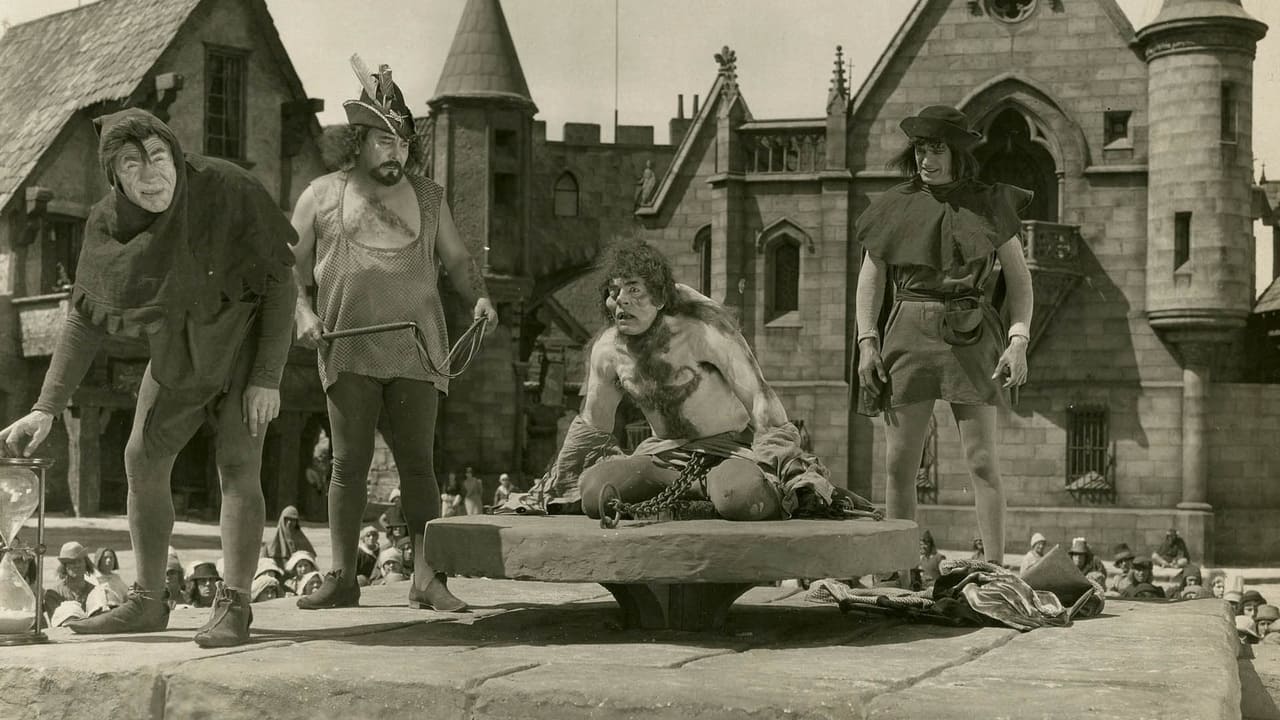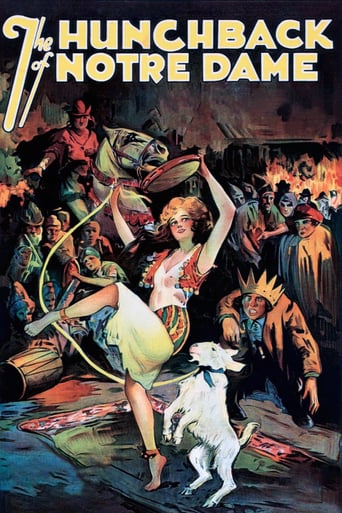

I like Black Panther, but I didn't like this movie.
... View MoreIn truth, there is barely enough story here to make a film.
... View MoreI didn’t really have many expectations going into the movie (good or bad), but I actually really enjoyed it. I really liked the characters and the banter between them.
... View MoreThe movie really just wants to entertain people.
... View MoreI purposely gave this film a somewhat lower rating than one might expect or think that it deserves.This was done solely because I don't enjoy a film that focuses in on the likes of grubby, low-life peasants, be they from the 15th Century or from the present.My aversion to bottom-of-the-barrel peasants is directly associated with the fact that I live within "a-hop-skip-and-a-jump" away from Canada's skid-row capital, which is located at the intersection of Main & Hastings streets in Vancouver, BC.I think that if you lived down in these dregs, as well, you'd be pretty damn repulsed and fed-up with the realities of what peasant life is really all about. You certainly wouldn't appreciate seeing it being somewhat glorified in a 100-year-old movie like this one.Anyways - This film's story is pretty depressing with Quasimodo (the hunchback) contemptuously spitting on the peasants and the peasants, in return, spitting back at him. And pretty, little Esmeralda, the sweetest gypsy girl (with a heart of gold), being forced into the middle of things and being spit on from both sides, while all the hot-blooded guys (including hideous Quasimodo) wantonly eyeing her.Yeah. There's plenty of treachery & betrayal & revenge & whatnot thrown into the mix (for good measure). But its too much of a focus on the truly ugly side of human nature. So, this film, in turn, fails to serve as viable entertainment after a while.The Hunchback Of Notre Dame's story is just too mean-spirited to sustain one's interest for very long and, with that, I cannot give this film more than a 4-star rating.
... View MoreWith the exception of the 1996 Disney version this is the most famous film adaptation of the 1831 novel of the same name by Victor Hugo. The film is about a deaf, half-blind, and deformed man named Quasimodo who is the bell ringer at the church of Notre Dame in Paris. The movie states that it takes place ten years before Columbus discovered America which would place the film at 1482. Now there is also a beautiful gypsy by the name of Esmeralda who has been adopted by Clopin, the king of the beggars. Esmeralda falls in love with the Captain of the Guard, Phoebus de Chateaupers. However, Clopin disagrees with the crossing of the two classes and starts an uprising plus Claude Frollo (the Archdeacon at Notre Dame) attempts to seduce Esmeralda. The story is overall pretty interesting and it follows the novel much closer than the majority of movie adaptations out there although there are still a few key differences.The acting in this picture is a mixed bag with Lon Chaney stealing the show as Quasimodo. He is amazing and truly looks like he could be a deformed person in that position. Chaney especially does a good job at getting his emotions across without the use of spoken dialogue. Patsy Ruth Miller does an above average job as Esmeralda but with the high budget of this film I expected some better acting with her character. Most of the remaining actors do a pretty good job in their roles but nothing spectacular.When it comes down to the technical aspects of the film it is very impressive for 1923. All of the sets are grand in scope and truly set the time period and location perfectly. Lon Chaney's make up is extraordinarily good with him doing his own makeup. Also the music is very good and a lot of it goes along with the film better than most silent film scores. Where sound effects are used they are used excellently as well.So overall there aren't any major problems with this film but there are some flaws. The story is pretty good but not anything amazing. As for the acting you have Lon Chaney who does a spectacular job while the rest of the cast is merely good but nothing great. Special effects and music are really good in this movie though and they all work very well for the time. In conclusion the movie is flawed but does enough right to make it worth watching so give it a try especially if you enjoyed the novel. Score: 8/10
... View MoreI saw the Hunchback the other day, and when Lon Chaney is on screen, which isn't nearly enough, you can see why he is considered by some to be the greatest actor of silent film. As the grotesque bell-ringer Quasimodo, Chaney's pantomime shows the complexity of a man with a beautiful soul imprisoned within a contorted form, fated to hate the world that sees him as a freak. Chaney's make-up is as usual superb. The rest of the cast doesn't fare as well.Second best is Patsy Ruth Miller. Pretty and petite, her performance is natural and understated, but she's the girl-next-door, and doesn't possess the sex appeal required of the role of the dancing-girl Esmaralda. Ernest Torrence as Clopin, and Raymond Hatton as Graingoire are adequate. The other featured players are awful. Norman Kerry as Phoebus, and Brandon Hurst as the villain Jehan are stock characters out of melodrama, types that give silent film an undeserved reputation for always being florid and stagy. Blame director Wallace Worsley and the writers for not demanding the same complexity of other characters as Chaney brings to the Hunchback. The results are often unintentionally humorous, as when Hurst strides into a scene with his cloak thrown over his face, and when Kerry rakishly bares Esmaralda's shoulder, but repents and, with a pained look of remorse, covers it up again.Set design is impressive and real—no CGI. Notre Dame Cathedral is an actual prop with gargoyles and statues that Chaney climbs on. But the sets are unimaginatively used by Worsley. There are no perceptible lighting effects. Exterior daylight scenes weren't shot in the studio, but always outside in bright sunlight and were sepia-tinted. Blue-tinted exterior night scenes were actually shot at night (unusual for the time) as the vapor on the actors' breath shows.Anyone acquainted with the novel will also realize that this adaptation is sub-par. For instance, how does Esmaralda's mother know gypsies stole her child? There were no witnesses. In the novel gypsies leave the hunchback in her place. Why is the Hunchback the slave of Jehan? We have no background information to explain their relationship. And what's Gringoire's purpose other than as a messenger from Esmeralda to Phoebus? In the film Phoebus is a conventional romantic hero, not the selfish, lascivious rogue as in the book. Chaney achieves pathos with his character, but audiences in 1923 could never stomach the novel's grand tragic ending in which Esmaralda dies. Also, fear of offending the church caused Universal to make the villain not a priest but the saintly priest's brother, who in the novel is an amiable chap.Some may be interested in this as an early horror film. But although there are elements of horror in the original story, Worsley's uninspired direction leave those avenues unexplored. The dark, Gothic atmosphere of the story would have to wait for German émigré director William Deiterle and cinematographer Joe August, who created a shadowy nightscape for the 1939 film. Nevertheless, it is nice to see a new print of this film which, although still scratchy, reveals much more detail, and moves at the correct projection speed, giving us a better idea of how the film originally looked.
... View MoreThis movie is an awesome production from start to finish. When there's a mob scene, it's a full tilt mob. The "Court of Miracles" is really populated by hundreds of Paris' "down and outs." Watching the hunchback navigate the façade of Notre Dame is breathtaking. Universal spared nothing making this picture, and it shows. And of course, Lon Chaney as the hunchback was both believable and repulsive.I cannot add much that hasn't already been said. I cannot recommend this movie highly enough, from viewpoints of both historical importance and pure entertainment. Finally, I recommend checking out Charles Laughton as the hunchback in the 1939 version; it too is a superb interpretation of Hugo's novel.
... View More